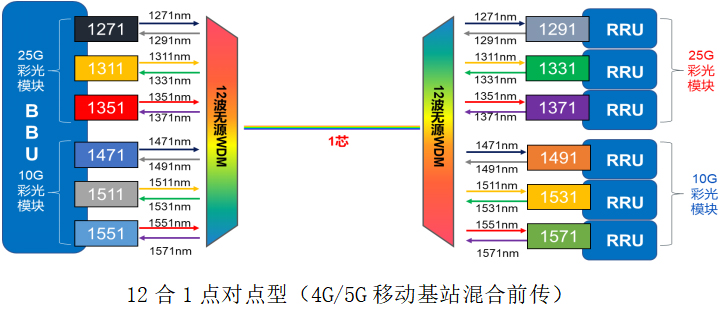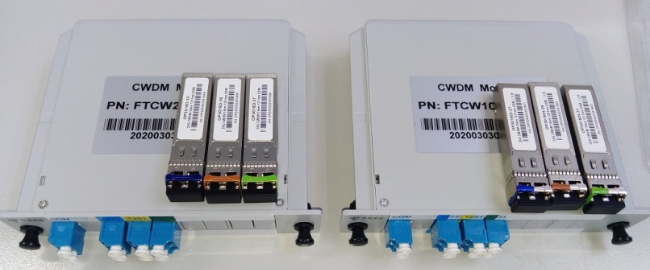Project Background
The 5G fronthaul network is an important part of the bearer network. The key point is to use a standardized 25Gbps eCPRI protocol interface to multiplex all service wavelengths of the base station while saving fiber resources.
The optical fiber resources between the base stations and computer rooms of Zhongshan Unicom's towns and districts are slightly abundant in the 4G network networking stage. With the rapid increase in users and traffic in recent years, especially in the 5G large-scale construction stage, it is imminent to deepen the fiber resources.
After in-depth customer research by optical technical engineers, a 5G fronthaul solution based on optical 25G CWDM uses a combiner/demultiplexer to achieve wavelength routing and save optical fiber; a single wavelength can support 25Gbps rate and meet eCPRI signal carrying requirements; 25G Optical modules can not only replace 10G optical modules, but can also be smoothly upgraded to higher speeds, such as 100G, 200G.
Network topology
WDM wavelength division systems are mainly used in metropolitan area networks, backbone networks, and wide area networks, and CWDM optical modules and DWDM optical modules are commonly used. Among them, the CWDM optical module adopts CWDM technology, which can combine optical signals of different wavelengths through an external wavelength division multiplexer, and transmit them through a single optical fiber, thereby saving optical fiber resources. At the same time, the receiving end needs to use a wavelength division multiplexer to decompose the complex optical signal.
This scheme uses CWDM wavelength division multiplexing technology, each channel spacing is 20nm, and the working wavelength is between 1270nm and 1610nm. Operator customers generally use the first 6 waves (1271nm~1371nm) and the last 6 waves (1471nm~571nm)
Generally, the first 6 waves are used as 5G fronthaul.


Light for the fronthaul WDM optical module products
The 25G CWDM/DWDM/LWDM solution provided by OPWAY can meet the higher requirements of the fronthaul bearer in terms of bandwidth, delay, synchronization, reliability, and flexibility.



